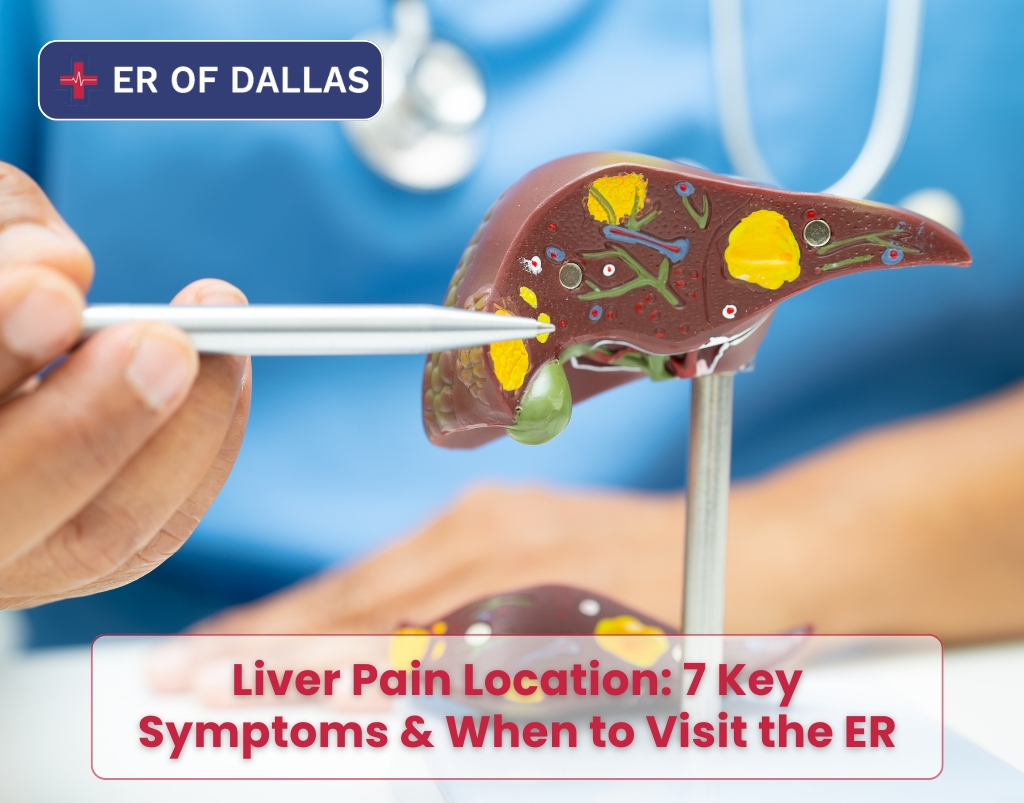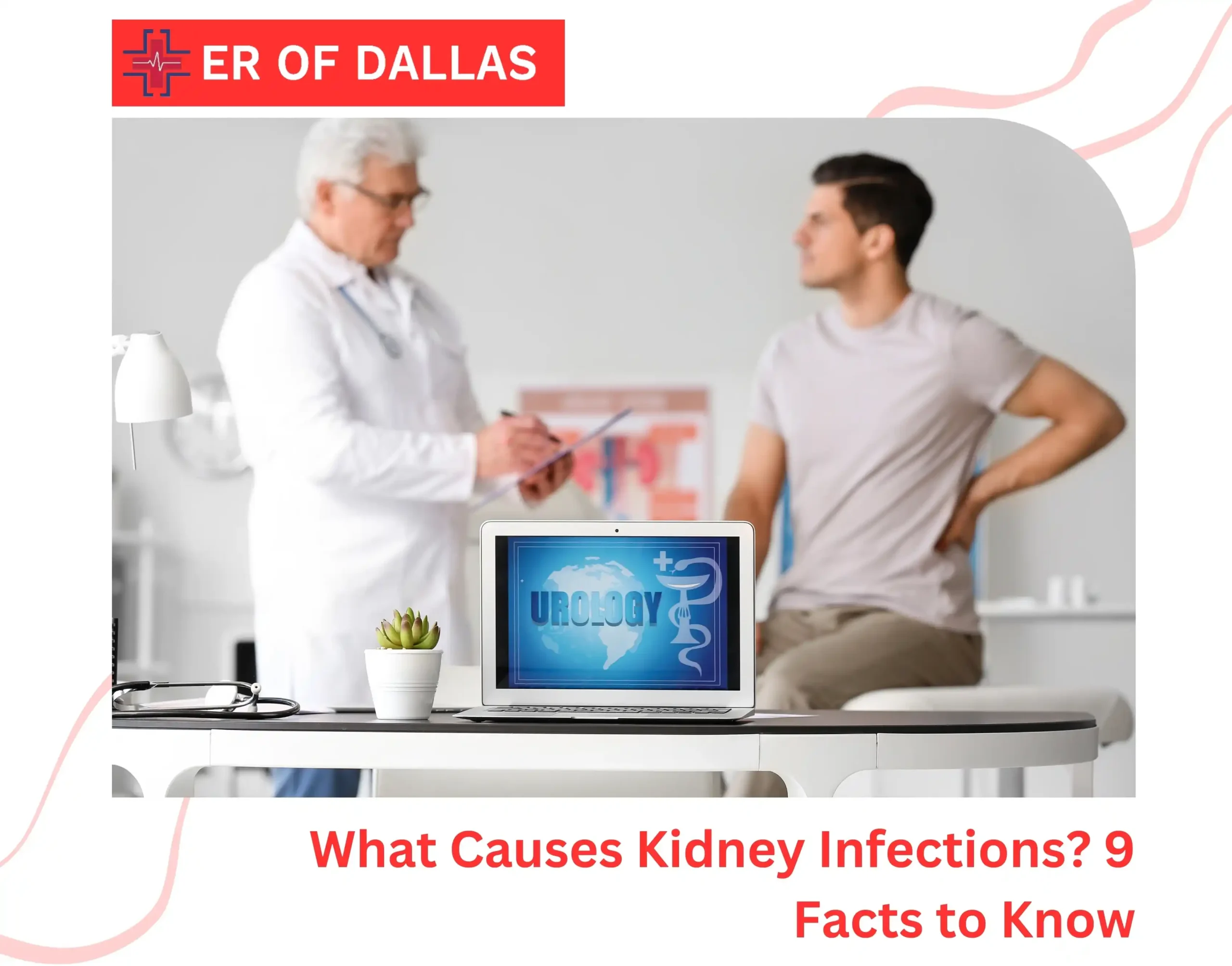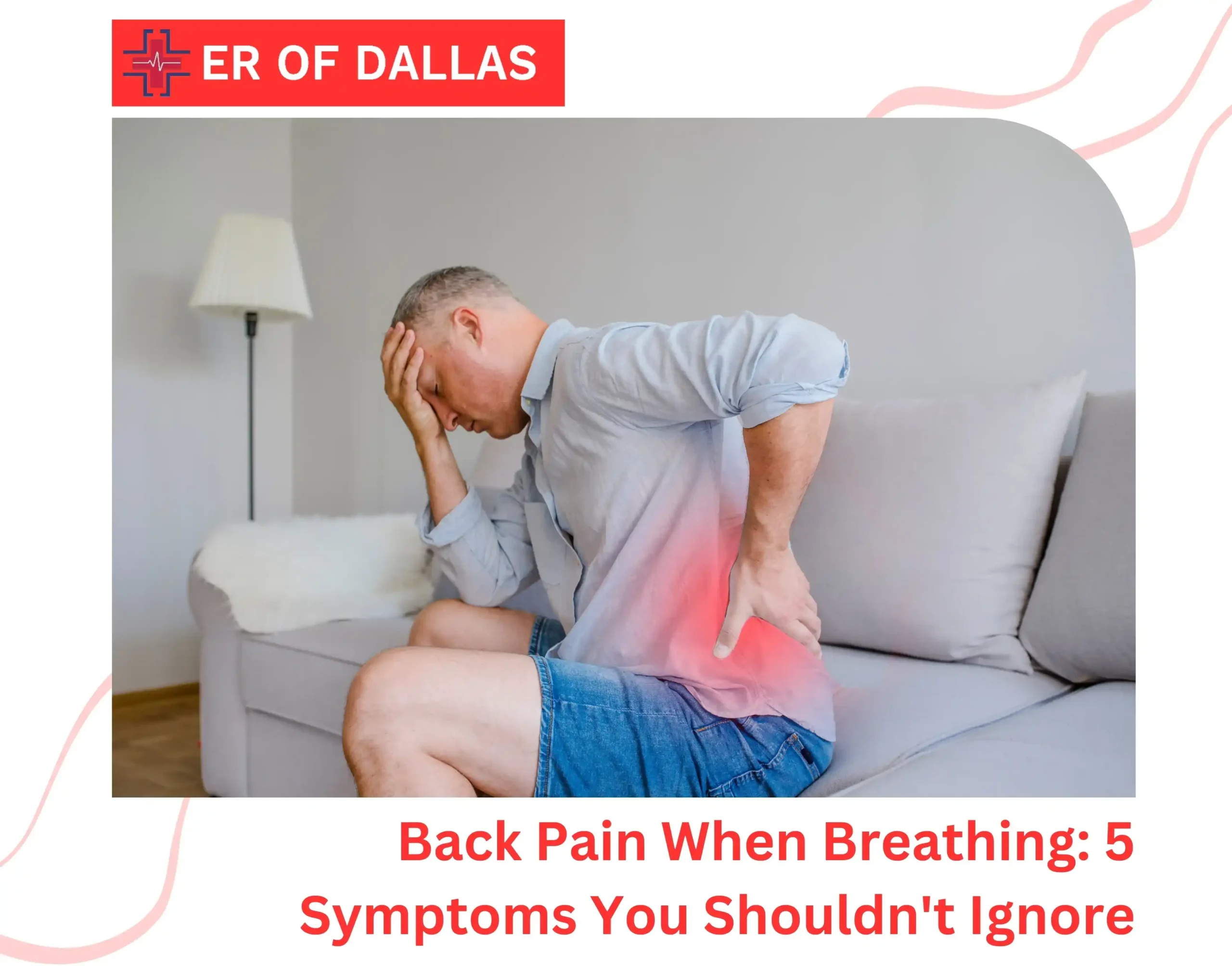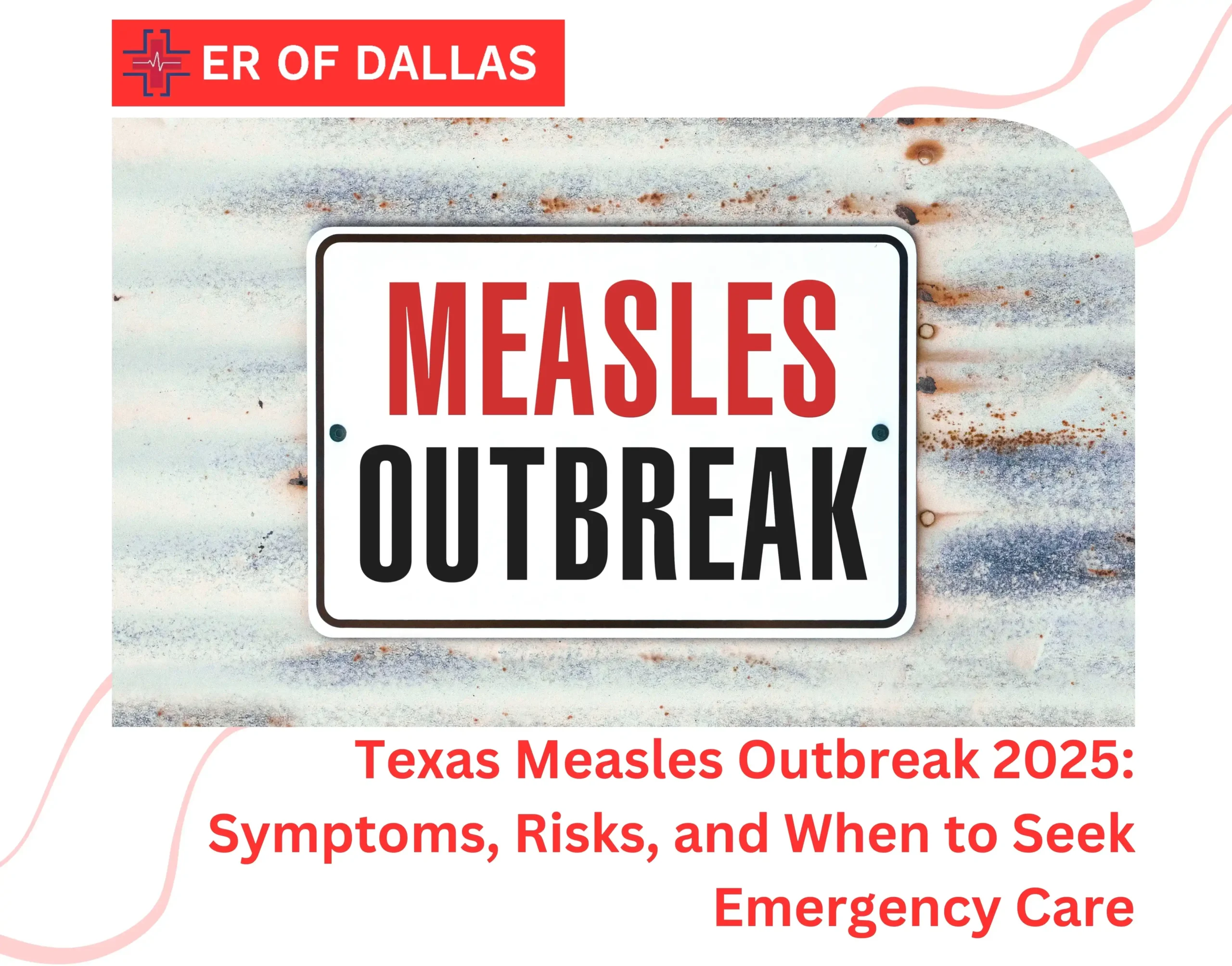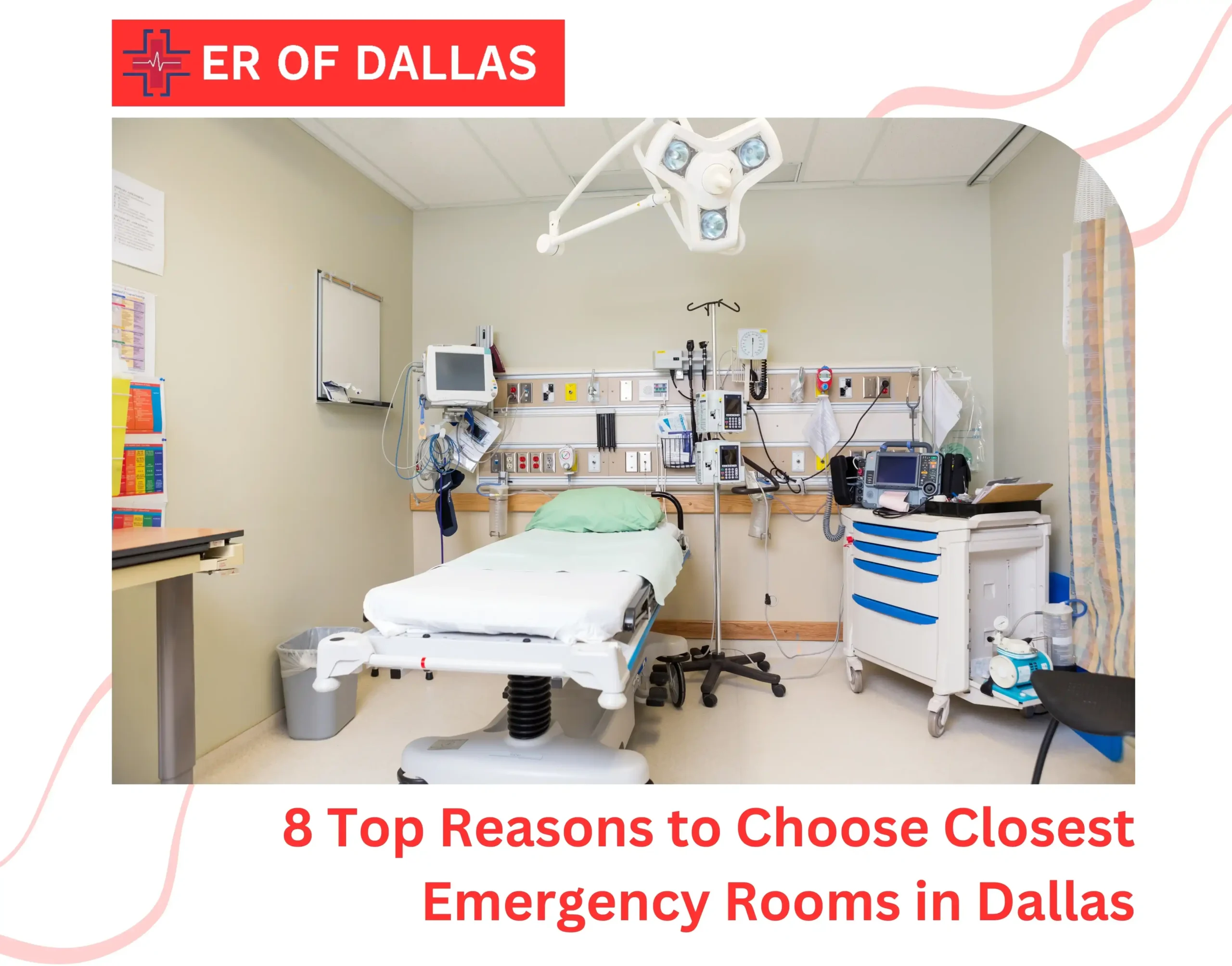In the case of a bone or bone fracture, a force, that is applied to the bone is stronger than a bone itself can bear. It shakes up the form and capacity of bone tissue, which brings about pain, disability, and sometimes bleeding and wounds around the area of absorption.
The main of this is broken is trauma, falling, or even other incidents. As a result, you should not hesitate, instead, you have to contact a doctor for the necessary prescription.
Now, if you’re not aware of the disorder, you might want to read this article and unravel the mystery of the transverse fracture that lies within it.
Transverse Fracture Definition?
One type of fractured bone is a transverse fracture that occurs when forces from two directions are applied to the bone. It is transversal fractures that go transversely to your bone direction, producing parallel cracks through it. These are also the most severe types of fractures called complete fractures. The implication here is that the transverse fracture X-ray shows that the bone has been fractured in two places that line up to its entire length.
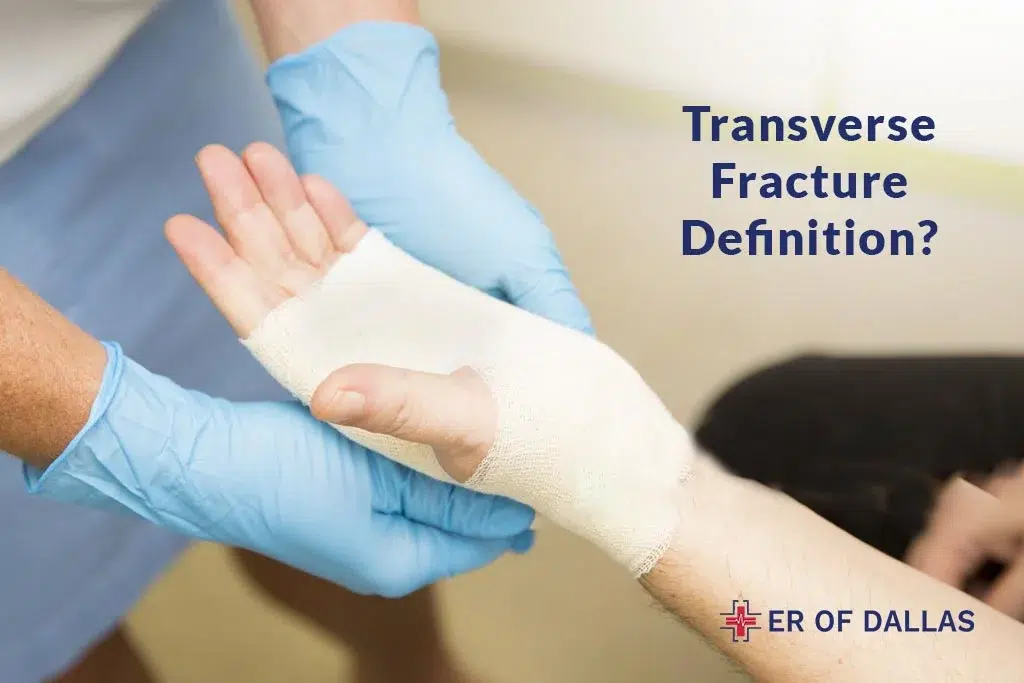
The bones in your body that are longitudinal or long-type are susceptible to these types of fractures. Among the most typical are:
- Femur (thigh).
- Tibia (shin).
- Fibula (calf).
- Humerus (upper arm).
- Radius and ulna (forearm).
- Clavicle (collarbone).
The Forearm or transverse fractures almost always occur due to traumas, such as falling or car accidents. With or without surgery, you might need to fix the fracture with another method. Some people may not even be required to go for surgery because a minimum of casting or winging of the bone can heal it.
How Does Transverse Fracture Occur?
Transverse fractures occurring among youngsters can be implicated to be caused by any collision that is of high energy level. This occurs while it’s a separation of the bone across its length when it’s not parallel. The getting of the cortex is a straight line performing against the bone axis in the opposite direction. Any bone in the body is capable of being affected, however, during a fall or accident situation, it is the long bones that are mainly affected.
Who Gets Transverse Fractures?
Bones can be affected by transverse fractures on anyone. What this specifically means is, they develop via a sudden blow or collision, which sometimes causes them.
In the case of the elderly with falling risk, you are at greater risk of sustaining an oblique fracture. Most people with an osteoporotic disease (fragile bones) incur a high probability of fractures of any type, including cracks along the mid-shaft of the femur.
How Serious is a Transverse Process Fracture?
A spinal fracture can be of several types but let me just tell you about one of them, which is a transverse process fracture. The bones that make up your back bone are called facets and they are affected by transverse process fractures. While the foramen is data emerge. located, in the laterals to the vertebral column. The majority of such patients fall in this category and only during any other categories of the broken bones are they brought on. The fractures of the transverse process arise due to a combination of factors. Another one of these problems is osteoporosis, which hides from patients the fact of the bone weakening (something they don’t understand). The transverse process fractures usually occur in the lower back region, and the fact that they can occur anywhere in the spine is another thing we have to pay attention to during our work.
Is Transverse Fracture Painful?
Indeed, to have a transverse fracture is painful and as a result, those who have it may also have soreness, edema, or tightness. Compartment syndrome represents one of the consequences associated with transverse process fracture which, people who bear severe, repetitive torques or impacts may suffer. It is a painful situation in which the lethal levels of the blood pressure at the muscles constrict. If the medical condition of the patient is more complicated or serious, surgical emergencies will also be on hand. In case, people are experiencing pain or something uncomfortable they must visit a professional orthopedist.
What is the Function of the Lumbar Transverse Process Fracture?
The transverse process is a site of connection for muscles that help tilt the spinal column as well as ligaments that hold the vertebral column stable. Each area has its type of structure for the shape.
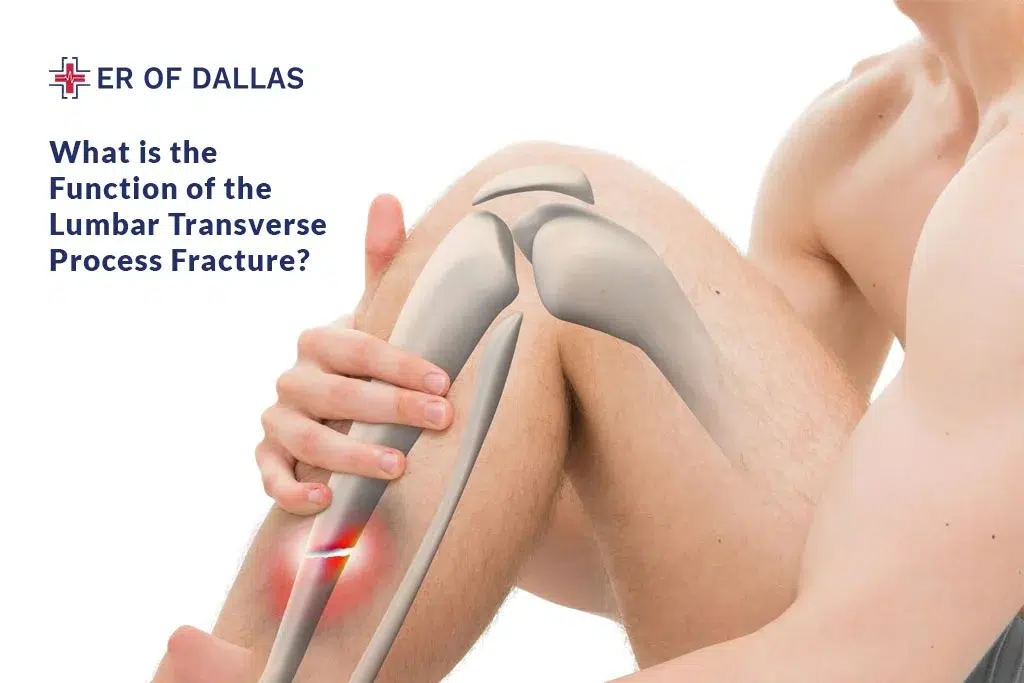
How Do You Treat a Lumbar Transverse Fracture?
Transverse fractures are as a rule the effects of blows such as falling or colliding in traffic accidents. You might demand surgery for this purpose. For some patients cast is the only needed intervention, once healed the bone can sustain its function. Full recovery periods even differ from one another in case you break a few bones and another one results from some traumatic incident.
How Do You Manage a Transverse Spine Fracture?
When it comes to transverse processes, the approach is usually in line with the principle of stepwise build-up in movement either via partial use of a brace or by extending restoration of motion as long as necessary and painless to the patient. Generally, patients are sent home after the recovery so they can walk as the injuries do not provoke spine mechanical instability.
They will be fitted with a back brace if the health care provider thinks it will help keep the patient somewhat immobile, then they will be told to take some ice compresses for 48 hours, to lie flat as much as possible, and not sit too much; if they have pain they should take their prescribed medication.
Transverse Fractures vs. Transverse Process Fractures
The bone can be broken with a fracture and transweeping transcortical fracture is one of these injuries of bones. Although, because both Gray’s ankle and Monet’s foot have many different lacerations, they are still very different from each other.
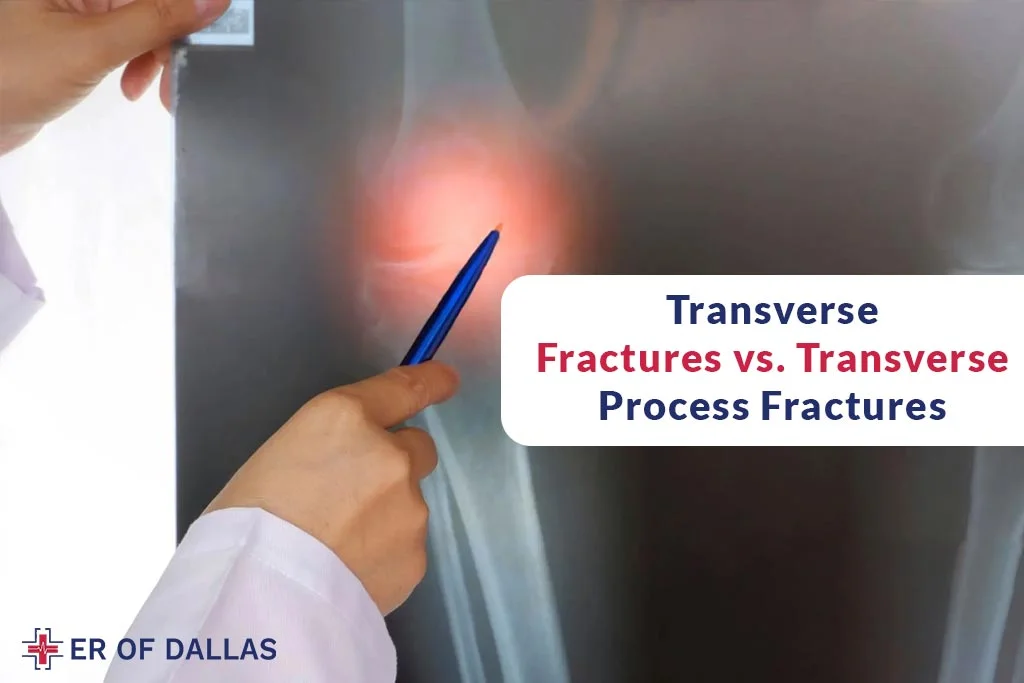
Attention usually focuses on the horizontal fissure being from the long edge of the breakage. In this structure, which is quite fine, you can compare it to a mirror, whose broken end reflects the stiffness of your bone. Very often, the participants of such a treatment also claim that every bone in their body can be affected but at the same time, those that develop longer, e.g. fractures due to a fall or an accident, are more likely to be.
One of the specialties that the fixed gown of a spinal fracture of this traverse process has is resilience. The transverse process, which is a bony projection almost the same in size as the bone of a column on top and bottom of your spinal vertebrae, is an anatomical structure that can be found regularly in both the upper cervical vertebral levels and lower lumber vertebral levels. Unfortunately that sometimes is becoming the core issue similarly as with any kind of bone fracture. First of all, there are steps in the illness that may lead to decreased bone strength without one being aware of it whenever the illness is not known. Lumbar fractures are a not-so-known fact that you may split the bone in any portion of your spine when a trauma supposedly occurs to your lower back (lumber bone).
What Are the Symptoms of Transverse Fracture?
Transverse fracture symptoms include a few that should not be disregarded. It’s critical to contact the physician as soon as possible. Pain, swelling, soreness, difficulty moving any part of your body, bruises, discoloration, and an unusual lump or deformity are all signs of a transverse fracture.
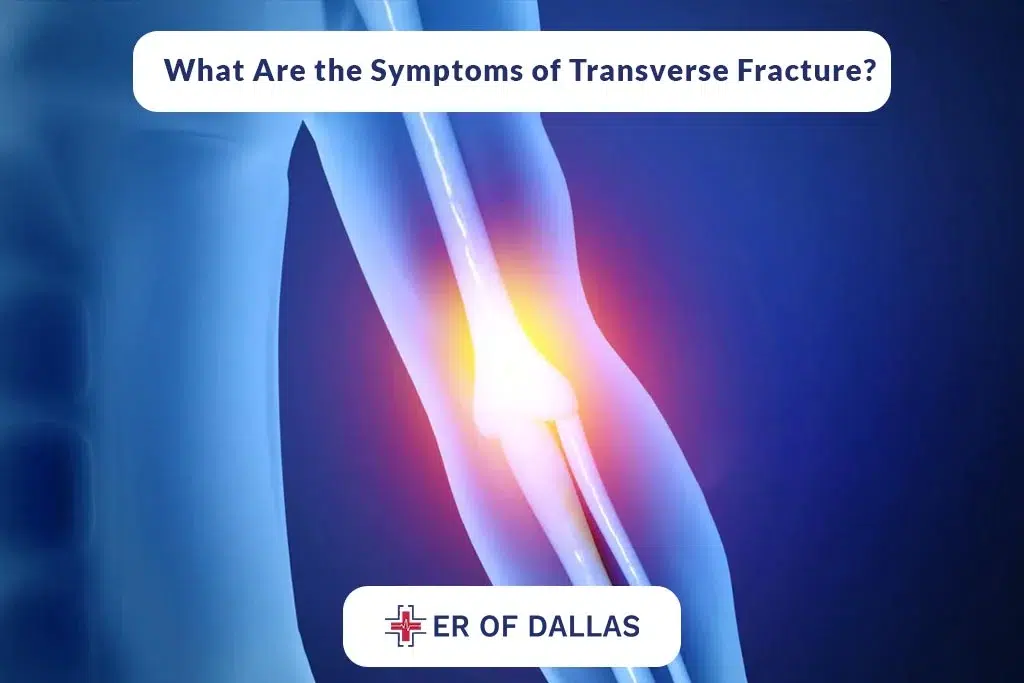
Symptoms of a transverse fracture include:
- Pain.
- Swelling.
- Tenderness.
- Inability to move a part of your body like you usually can.
- Bruising or discoloration.
- A deformity or bump that’s not usually on your body.
Causes of Transverse Fractures
One of the common transverse fracture causes includes motor vehicle crashes or motorcycle incidents of the femoral shaft fracture. Another main cause of transverse fracture is being hit by a car while walking. Other factors contributing to transverse fracture include falling from heights, gunshot wounds, etc. Older people can experience the problem due to lower-force accidents or falling due to standing for a long period.
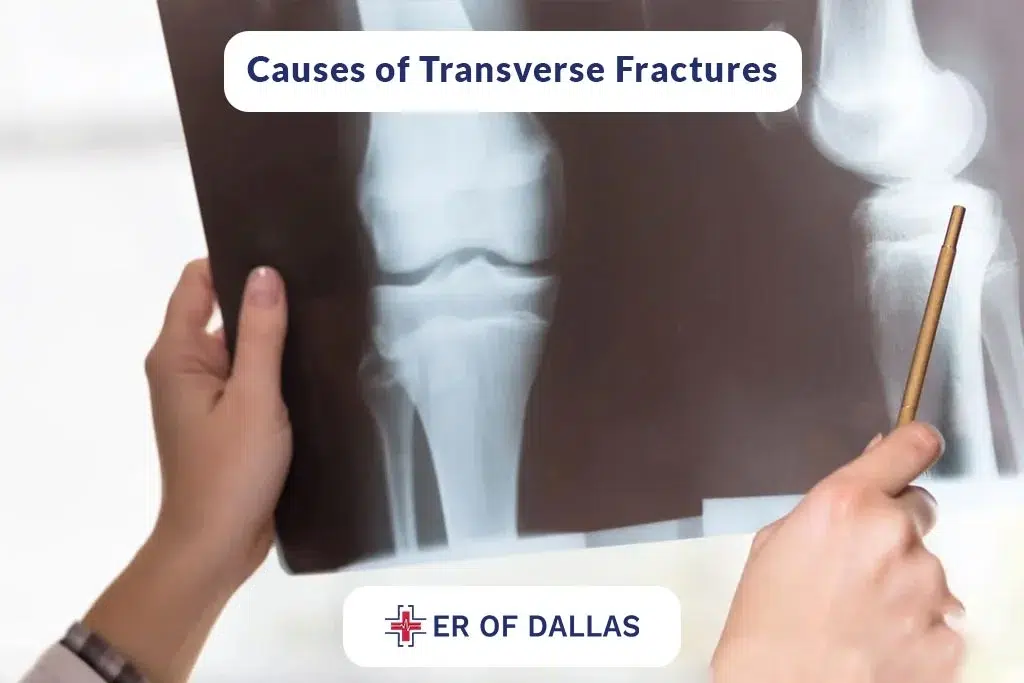
Any impact on your bones can cause a transverse fracture. Some of the most common causes include:
- Falls.
- Car accidents.
- Sports injuries.
Transverse Process Fracture Treatment
A transverse fracture treatment is determined by the extent of the original break mechanism. Your skull needs to be mended because your broken bones are still in need of sewing back together. The treatment completely depends on the severity of the knee injury and according to its cause, not all one method might be applicable, so, your provider can choose from different treatment plans.
Immobilization
If your fracture is minimal and the bones did not depart from their usual place of a few millimeters (Non-displace fracture); you may need to be fitted with just a splint or cast. Usually, splinting lasts for three to five weeks a tendency. In a case where a cast would be prescribed for you, it can be for a longer duration, normally added six to eight weeks. Not only do you require extra rays, but you also need subsequent X-rays to ensure your bones are healing properly in the two scenarios.
Closed Reduction
More severe breaks require a closed reduction to set (realign) your bones. During this non-surgical procedure, your provider will physically push and pull your body on the outside to line up the broken bones inside you. To prevent you from feeling pain during the procedure you’ll receive one of the following:
- Local anesthetic to numb the area around your fracture.
- Sedatives to relax your whole body.
- General anesthesia to make you sleep through the procedure.
After the closed reduction, your provider will put you in a splint or cast. Over-the-counter NSAIDs like aspirin or ibuprofen can lead to bleeding and other complications after surgery. Your surgeon will talk to you about the medications you can take to reduce pain after your surgery.
Internal Fixation
The most complex kind of basic fracture needs surgery. You can expect your orthopedic surgeon to perform a realignment (bone set) and fix your bones in their correct place before they can heal and rejoin together. It is an inside fixation usually involved, which means that a surgeon inserts metal fragments into your fractured bone to keep it in the correct position while you heal from the fracture. It will be necessary to restrict the range of activities that involve your bone which has a brain transplant to make the final homeostasis of your seamless bone.
Internal fixation techniques include:
- Rods: A rod inserted through the center of your bone that runs from to bottom.
- Plates and screws: Metal plates screwed into your bone to hold the pieces together in place.
- Pins and wires: Pins and wires hold pieces of bone in place that are too small for other fasteners. They’ll typically be used at the same time as either rods or plates.
Some people live with these pieces inserted in them forever. You might need follow-up surgeries to remove them
Transverse Process Fracture Healing Time
It could take around a two-week time frame for you to catch up with the same improvements. If the surgery you had to perform was of the transverse type and if more than one bone was broken then you can expect moving again within two to four weeks.
Call your healthcare provider at the ER of Dallas immediately if you encounter pain that is very uncomfortable and persists.
What are the Transverse Process Fracture Long-term Effects
Transverse fractures may cause Severe pain that may be worse during movement. Tenderness, swelling, and possible bruising over the area. Numbness, tingling, or muscle weakness.
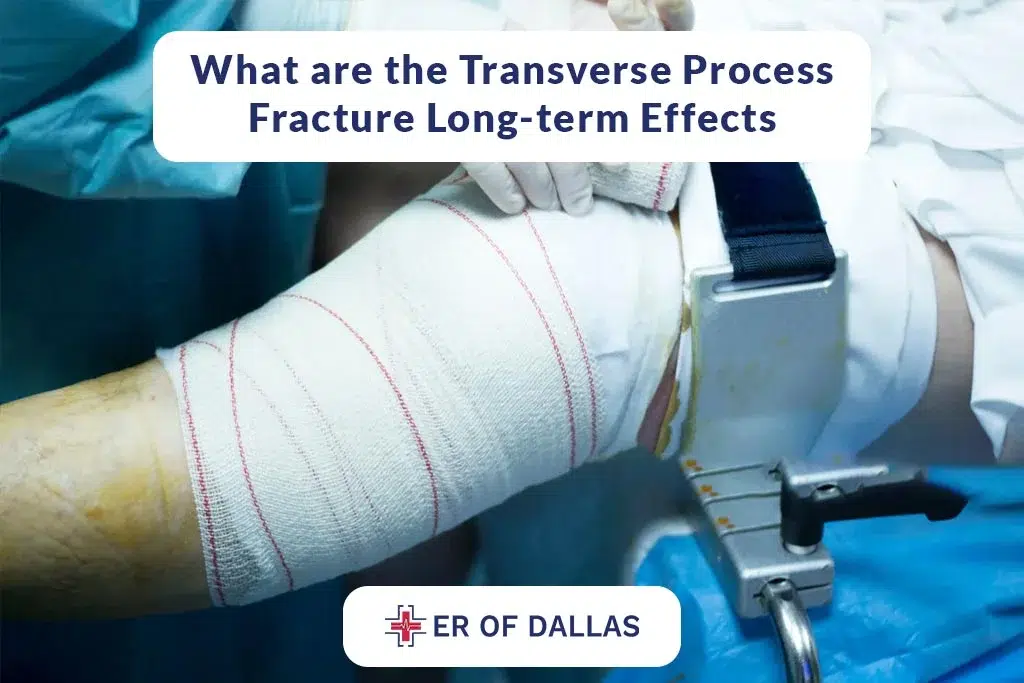
Follow these general safety tips to reduce your risk of an injury:
- Always wear your seatbelt.
- Utilize the appropriate gear for each activity and sport. The right clothing will help you feel secure and ready for anything.
- Make sure your home, as well as workplace, are free of hazards such as clutter that might make you or others fall.
- It is possible to use the correct personal tools or equipment at home when you need something; there is no requirement for help from others. The chair, table, and countertop will never house you.
- Cover the essential rules of diet and exercise portion that will help you to be on the good side of bones.
- At 50 you need to get bone density tests at the request of a healthcare provider or if osteoporosis is run within your family as genetics play a big role in this disease.
Use your cane or walker if you have difficulty walking or an increased risk for falls.
Complications of Transverse Process Fracture
Transverse fracture surgery complications include:
- Acute compartment syndrome (ACS): The deeper you dive, the pressure in your muscles will start to build up, creating a situation where blood cannot properly reach tissues leading to damage to muscles and nerves. This damage does not reverse even when you get to the surface.
- Malunion: This will occur when a fracture has a misalignment of broken bones when they re-position themselves as they heal.
- Nonunion: When the bone breaks, it will not get back together or just a partial mend may happen.
- Bone infection (osteomyelitis): Contrary to common injuries that do not open through the skin, you are at risk of bacterial infections if you have an open fracture (the bone breaks through your skin).
- Other internal damage: The injury site can be compromised with fracturing which includes tissue surrounding the injury, muscles, nerves, blood vessels, tendons, and ligaments.
Open vs. Closed Fractures
Your provider will be sorting the fracture as either an open fracture or a closed fracture. The moment that you are injured with an open fracture your bone breaks your skin. Gaps in the skin often require a longer healing time and they are at risk of infections and other consequences. Closed fractures (in your case) are still serious, but, unlike open ones, your skinned bone is enclosed by your skin.
Displaced Transverse Fractures
You may have a chance to hear from your provider among other medical words like an “open” or “closed” fracture. A gap means that fragments of your bone were moved around so that a fracture along with the movement of your bone happened at the time of a fracture. The non-displaced fracture is set inside at the level of the undisplaced broken bone while the pieces did not move far enough for them to be out of alignment. Being exposed to secondary displacement, fractures are more likely to require surgical intervention than being allowed to be treated conservatively.
FAQs
What Are The Steps In The Diagnosis Of Transverse Fractures?
X-rays in a direction that is perpendicular to the body will be done to determine the presence of any fractures and to what extent your bones are impacted.
How many days do we need to recover from a transverse process fracture surgery?
The estimated time required for a fracture healing after a transverse spinal fracture is even more – up to six weeks. The period of healing from painful medical procedures depends on your age and the general state of your health. They state that both children and people in general, who are in good health in general, tend to heal sooner. Adjusting your activities while your back is healing is necessary if you will need to replace rest as a form of treatment since complete rest is rarely the only option you can have to achieve a fast recovery.
What Kind of Measurable Strategy can be employed to Prevent a Transverse Fracture?
Fractures transversely, that are so commonly affected by falls and other such difficult-to-avoid accidents, are a result of those events. If these instruments are helpful for you to maintain balance and eliminate the risk of falling, then make sure to bring one with you.
People with genders called women, trans women, or one’s assigned female at birth, as well as adults over 50, are more likely to be prone to develop the bone condition osteoporosis. Ask your care provider for bone density testing to determine the probability of osteoporosis development before it causes a fracture.
Conclusion:
Gladly, your condition should improve after the traumatic fracture as you could undergo an operation, thus fixing your bones. Ensure that you closely adhere to your recovery plan. Just don’t rush it. It’s possible to spend several months getting back to your usual routines and activities. Crushing your body instead of letting it heal is likely to result either in complications or more damage to your bones.
A visit to your Dallas doctor at the orthopedic urgent care can give you some great suggestions on how to keep healthy bones. Make sure that you get regular bone density testing at least once you turn 50 or if your family has osteoporosis.


